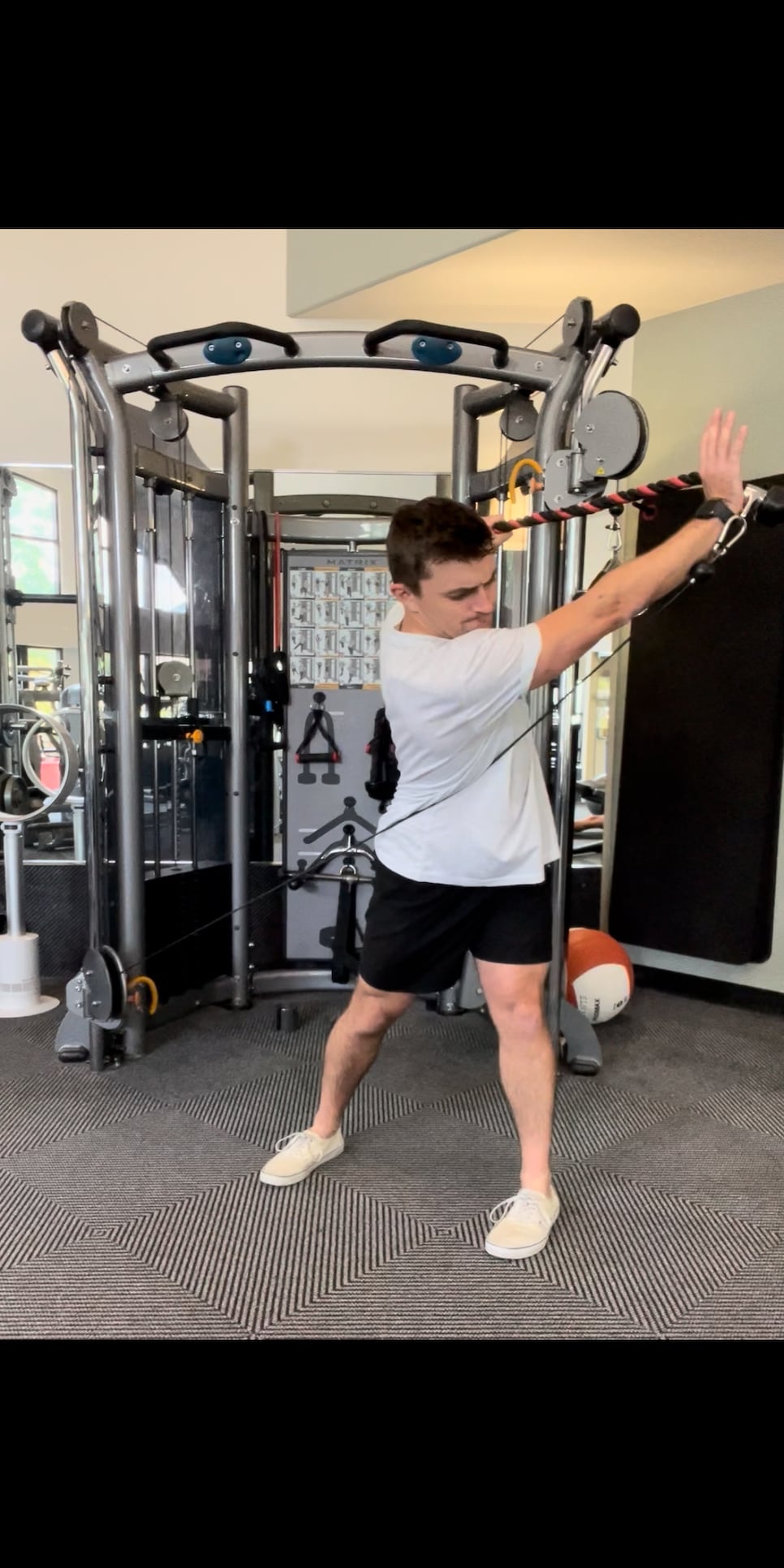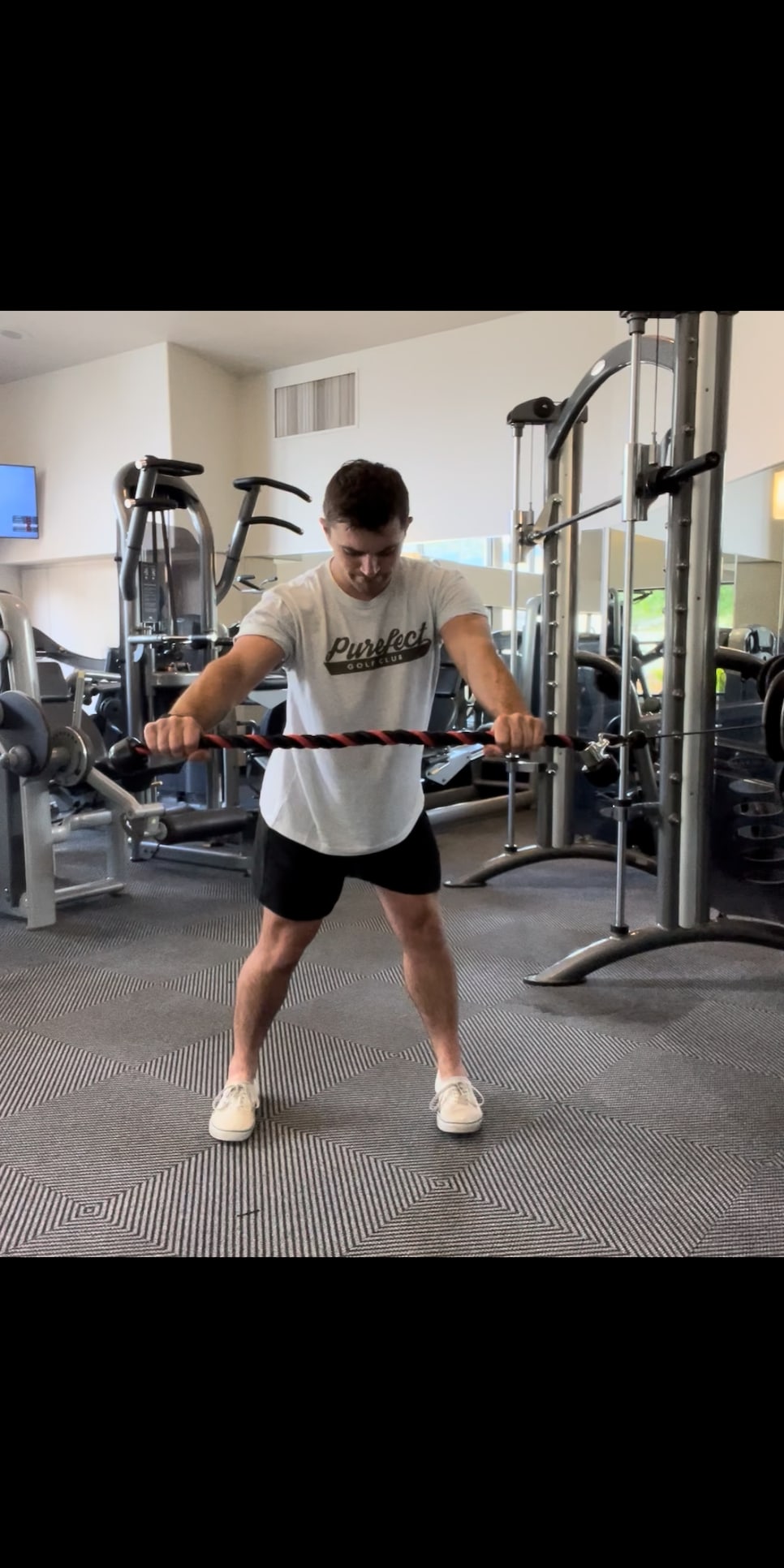You’re looking here at Golf Digest’s No. 1 ranked teacher in America, Mark Blackburn. No, this isn’t what Mark looks like in his downswing. Here he’s modeling a classic fault—sliding. It’s what happens when your body drifts out in front of the ball’s position during the through-swing. Another classic mistake is swaying, which is when your body weight drifts excessively away from the target in the backswing, moving outside the support of the trail leg.Both mistakes lead to a host of ball-striking issues and are often the result of something other than simply having poor swing mechanics. The cause is physical limitations of the hips, says Matt Arentz, a Golf Digest Certified Fitness Trainer. Arentz trains golfers at his studio, ArentzRx Golf, in Napa, Calif.”Many golfers I see have limited hip rotation, particularly internal rotation, meaning when either hip moves toward the opposite side of the body,” he says. “The ability to separate the lower body from the upper body is a key part of making a full turn with proper sequencing. And glute strength is a primary source of both stability and power for the hips.”Golfers who can’t move their hips somewhat independently of the torso tend to move everything together, and that’s where sliding and swaying come from, he says. While getting the upper body to lead in the backswing and the lower body to lead in the downswing can be challenging to someone who is uncoordinated, there’s no way of knowing that until there is certainty that it’s not because of physical limitations. To train the hips to move properly in the golf swing, Arentz has three simple exercises you can do. Two require a resistance band or cable machine and the other can be done virtually anywhere as it requires no equipment. Follow along as Arentz demonstrates the moves.
SPLIT-STANCE HINGES AND ROTATIONS 

Get into a split stance and hinge from the hip joints as if lowering into your address posture for golf. Keep your arms crossed over your chest. From this position, rotate your torso toward the lead leg. Hold for a second and then return to the start. Do several reps and then switch leg positions and rotate in the opposite direction.
RESISTANCE BAND OR CABLE LIFTS AND ROTATIONS 

Simulate your address posture in a golf swing but hold an anchored band or cable with both hands low to the backswing side of the body. Simulate a through-swing by rotating your body toward the target while pulling and then pressing the cable or band across your body and upward and away from it, extending your arms fully as if moving into the finish position of a golf swing. Return to the start and do several reps before repeating the exercise in the opposite direction.
RESISTANCE BAND PALLOF HIP ROTATIONS 

From a simulated address posture, hold a taut resistance band or cable out in front of your torso, arms fully extended. While keeping your upper body as still as possible in this extended-arm position, alternate rotating your hips inward toward the opposite leg as far as you can. If your torso begins to rotate, stop and return to the start to do another rep. Do several reps with each hip internally rotating.
If you routinely do these three exercises but continue to sway or slide in your golf swing, then it’s time to see a golf instructor to pattern better movements.Click the link for more information on Golf Digest’s Certified Fitness Trainer program.
This article was originally published on golfdigest.com




